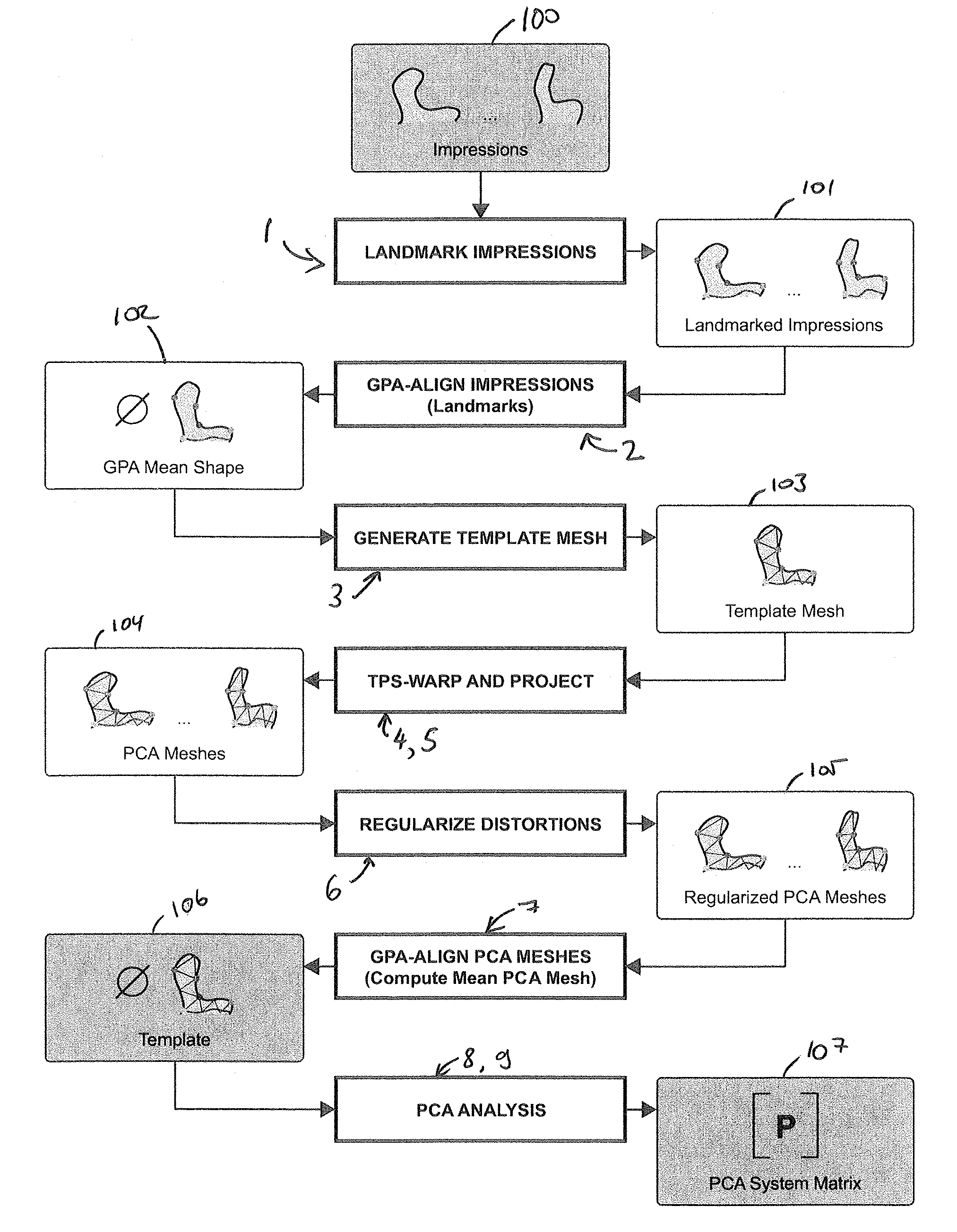Method for estimating the shape of an individual ear
- Summary
- Abstract
- Description
- Claims
- Application Information
AI Technical Summary
Benefits of technology
Problems solved by technology
Method used
Image
Examples
Example
[0102]FIG. 4 shows a first embodiment of matching the previously-generated TASM 401 to a newly measured determined shape 402, i.e. impression, taken from e.g. a prospective wearer of a hearing device.
[0103]Overall, matching the TASM and the impression can be regarded as an optimization problem, estimating a set of parameters such that they minimize a cost function. The set of parameters consists of the weights in the PCA Modes vector for a non-rigid registration part (deforming the TASM) and a rigid registration part for the pose (translation and rotation). The cost function is a surface distance between the deformed template shape and the new impression.
[0104]Firstly, in the rigid-registration step 41, the new impression (i.e. the determined shape) is aligned with the TASM by means of a rigid Iterative Corresponding Points (ICP) method, which aligns the impression with the TASM by translation and rotation. Rigid ICP is well-documented in the literature and need not be described fur...
PUM
| Property | Measurement | Unit |
|---|---|---|
| Length | aaaaa | aaaaa |
| Shape | aaaaa | aaaaa |
| Softness | aaaaa | aaaaa |
Abstract
Description
Claims
Application Information
 Login to View More
Login to View More - R&D Engineer
- R&D Manager
- IP Professional
- Industry Leading Data Capabilities
- Powerful AI technology
- Patent DNA Extraction
Browse by: Latest US Patents, China's latest patents, Technical Efficacy Thesaurus, Application Domain, Technology Topic, Popular Technical Reports.
© 2024 PatSnap. All rights reserved.Legal|Privacy policy|Modern Slavery Act Transparency Statement|Sitemap|About US| Contact US: help@patsnap.com










